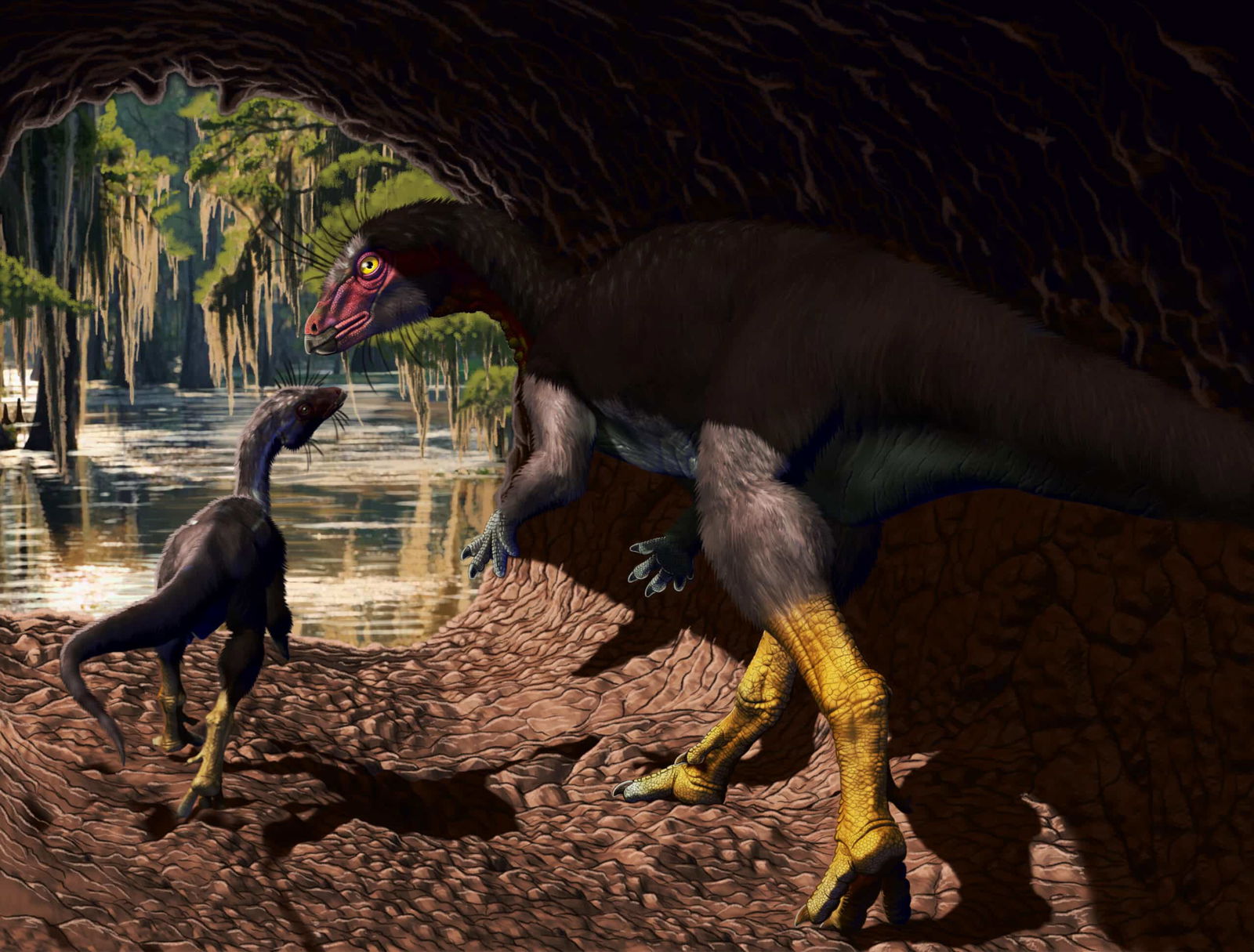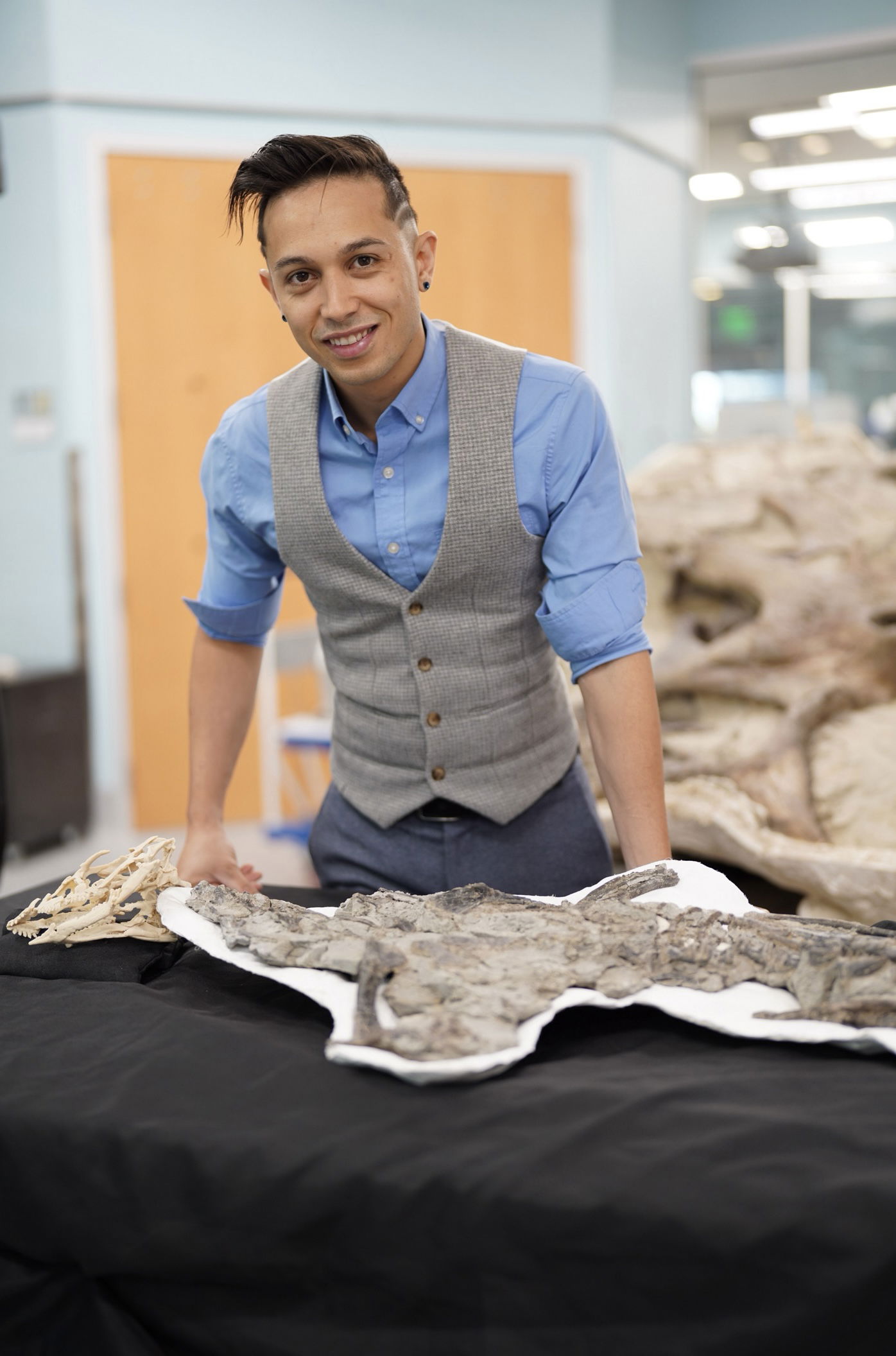FONA herzogae, a newly discovered dinosaur species in the Cedar Mountains of Utah, was named after a Chamorro goddess.
The grandparents of paleontologist Haviv Avrahami, a member of the research team, are from Guam. He gave the dinosaur its genus name, Fona, based on the ancient Chamorro creation myth. Its species name, herzogae, is in honor of North Carolina Museum of Natural Sciences paleontology operations manager Lisa Herzog.
According to a press release from North Carolina State University, where Avrahami is studying to earn his Ph.D., Fona was a “small-bodied, plant-eating dinosaur.”
It had anatomical features that led scientists to believe the dinosaur could dig and burrow underground. It had “large bicep muscles, strong muscle attachment points on the hips and legs, fused bones along the pelvis…and hindlimbs that are proportionally larger than the forelimbs.”
Avrahami joked that the dinosaur was like a “gargantuan gopher, mixed with a vegetarian crocodile, and also like an ostrich.” He said it could walk on its two hind legs.
Avrahami told Variety that “one of the most exceptional things” about Fona is that it was one of only two dinosaurs known to burrow.
It also raised its young underground. Avrahami said predation may have driven the animals to seek shelter there. Fona was a “small” dinosaur — adults could stretch to seven feet long from tail to snout, Avrahami said, adding that researchers were able to find many of its bones intact. He said their tendency to bury themselves in the ground helped with the preservation.
It was this connection to burrowing and fossilization that led Avrahami to draw a parallel between the dinosaur and the Chamorro creation myth.
The name Fona came from the Chamorro goddess Fo’na, who created the world from the body parts of her divine brother after he died. When her work was complete, Fo’na turned into a rock from which all humans emerged.
In Avrahami’s scientific paper regarding Fona herzogae, he said at a location called the “Mini Troll,” he and his team discovered two “subadult dinosaurs” that could have been male and female or “perhaps siblings.” These specimens “fell into the earth where they…fossilized,” he said.
It took Avrahami years to understand that Fona is its own species.
“I took all the bones of its skeleton and I traveled around the world and kind of looked at a bunch of its relatives and I was able to figure out that these features were unique,” he said,
With his self-described “hunger for everything” regarding Pacific culture, Avrahami called it an honor to be able to name his first dinosaur after his own cultural heritage.
He finalized Fona as its genus name after consulting with cultural practitioners from Guam, including Dietrix Duhaylonsod, Jeremy Cepeda, Ralph Unpingco, and Brandon Cruz.
“We went to the ancestral creation story because that’s a story about beauty, about life, about creation, which more closely mirrors the life of Fona the dinosaur,” Avrahami said.
Besides honoring his roots, the naming of the species based on indigenous culture is also an attempt to “decolonize” paleontology, he said, adding that Western science has many instances of “dark history.”
“There’s been a lot of Western, colonial powers that have dropped in or parachuted into indigenous lands and kind of extracted the minerals, fossils, and dinosaurs from Native American lands,” he told Variety. “They bring [specimens] back to their Western museums and it strips them of the cultural heritage and the natural heritage that is on indigenous lands.”
Avrahami hopes that by honoring his indigenous culture, he can help create a more diverse set of scientists in the future.
“Ultimately what I hope is that this will inspire kids that are growing up to see that indigenous cultures are becoming more represented in the sciences,” he said. “That there’s a place for all kinds of ethnicities and cultures to thrive. We’re trying to craft a community that’s really accepting of a lot of different cultures.”

Fona herzogae

Haviv Arahami’s research describes a new dinosaur species that was discovered in the Cedar Mountains of Utah.

Haviv Avrahami stands at one of the sites where he and other researchers helped discover Fona herzogae.

Clockwise from top left, Dietrix Duhaylonsod, Haviv Avrahami, Jeremy Cepeda, and Ralphy Unpingco meet to help Avrahami conduct cultural research.

Haviv Avrahami is a PhD student at North Carolina State University where his research describes Fona herzogae, named in part after the Chamorro creation goddess Fo’na.










